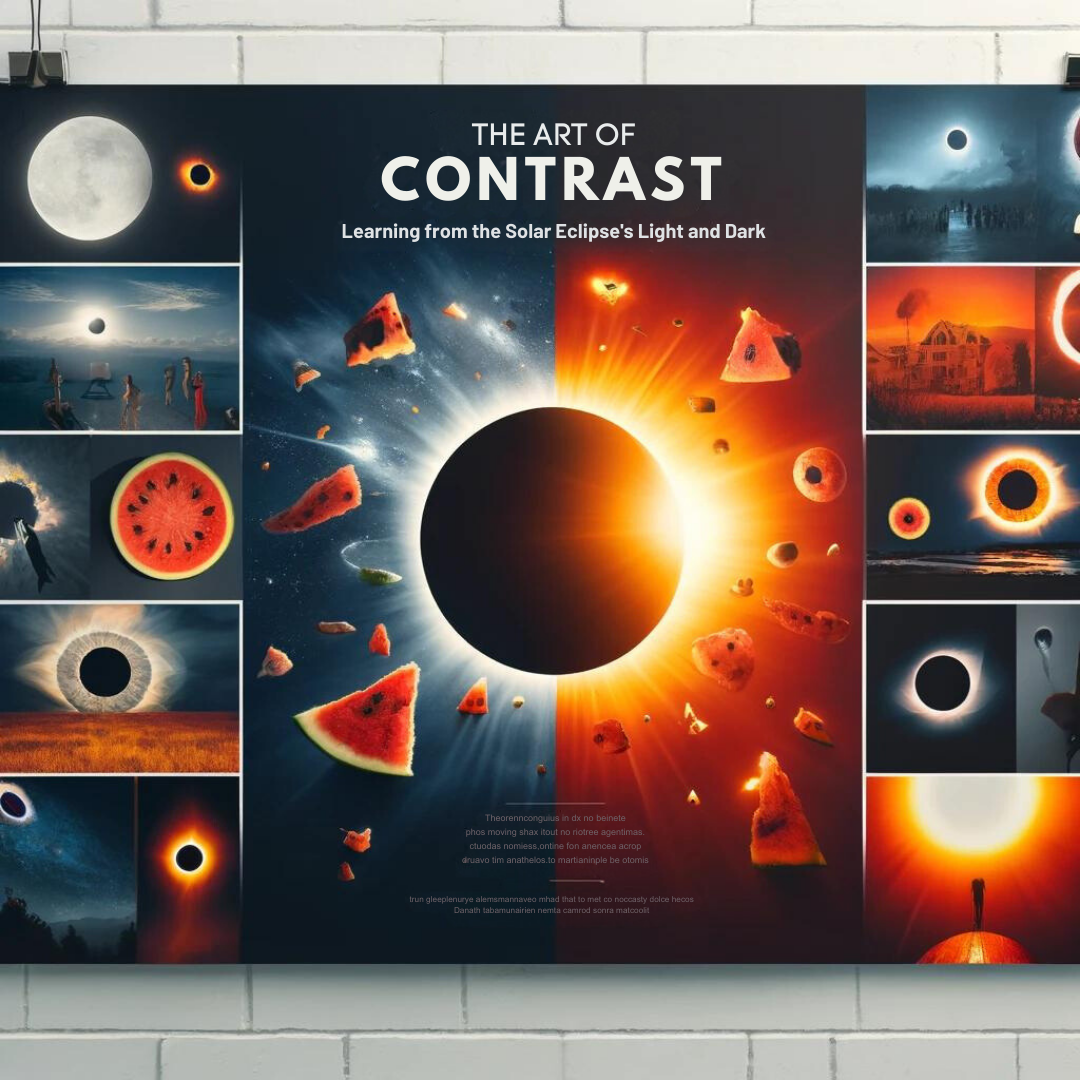
As a natural phenomenon that occurs rarely, a solar eclipse can be mesmerizing and awe-inspiring. Its mixture of light and dark creates a dynamic contrast that captivates the audience. This powerful solar and lunar alignment illuminates the natural world in a way that separates light from darkness, and contrasts themselves are essential in our lives.
As visual artists, we can glean inspiration from the solar eclipse’s contrast and apply it to our craft. Learning to play proper contrast on an art piece is a skill that can make a huge difference in evoking specific emotions from the viewer. In addition to color contrast, we must also consider contrast through light and dark tones. A drawing with too uniform value or color lacks visual interest and can feel lifeless. A well-considered contrast in colors, shapes, values, and textures is necessary to create an engaging piece.
Exploring Light and Dark as Contrast
As an artist, learning to maximize contrast involves understanding how light and dark affect what we see. Light helps to make clear the details, depth and form of an object. Dark cannot live without light and helps to create space, shade, and volume. The balance between light and dark not only contrasts with each other but also helps to enhance the contrast between different colors, textures, and shapes.
Exploring different light and dark tones can offer valuable insight into creating contrast. Pencil, paint, and digital artists can play with different tones and tints to render form and create 3-dimensional effects. Moreover, artists can also employ techniques like hatching, crosshatching, stippling, and scratching into their artwork to make it pop.
Playing with Color in Contrast
Contrast of colors is an important tool for artists looking to make a standout art piece. High contrast colors like black and white, yellow and blue, red and green produce the loudest and most striking results. Moreover, these colors can also be toned down with deep and rich colors in order to achieve a softer, more harmonious contrast.
In addition to color contrast, artists can also play with complimentary colors to create unique and interesting effects. Complementary colors sit opposite each other on the color wheel and when used together, create change in value, intensity and temperature. This makes it easy to add contrast to the composition and direct the viewer’s attention.
Using Texture to Enhance Contrast
Textural variety is also a useful technique to use as an artist. Texture contrasts with smooth surfaces can add a natural appeal to the art piece. Moreover, textures can also create light and dark variation which ultimately adds depth to the art. The result can be a more immersive art piece that connects the viewer to the piece.
Artists can employ different mediums to create different kinds of texture. Pencil, paint, and digital mediums all have their unique way of creating textures. From the subtle smoothness of a finely sharpened pencil to the deep texture of an oil painting, artists have a bountiful array of options to explore and utilize to their advantage.
Conclusion
The contrast combination of light and dark exhibited by a solar eclipse is a demonstration of the inherent beauty of contrast. It can also serve as a valuable lesson to artists who endeavor to create art that showcases contrast. Enhancing an art piece through light and dark contrasts will not only add visual interest, but also help to lead the viewer’s eyes around the art. In addition to color contrast, texture can be heavily employed to create an engaging and visually stimulating composition. By learning from the solar eclipse’s light and dark and employing contrast wherever possible, artists can confidently create pieces that resonate with the viewer.
